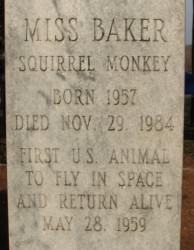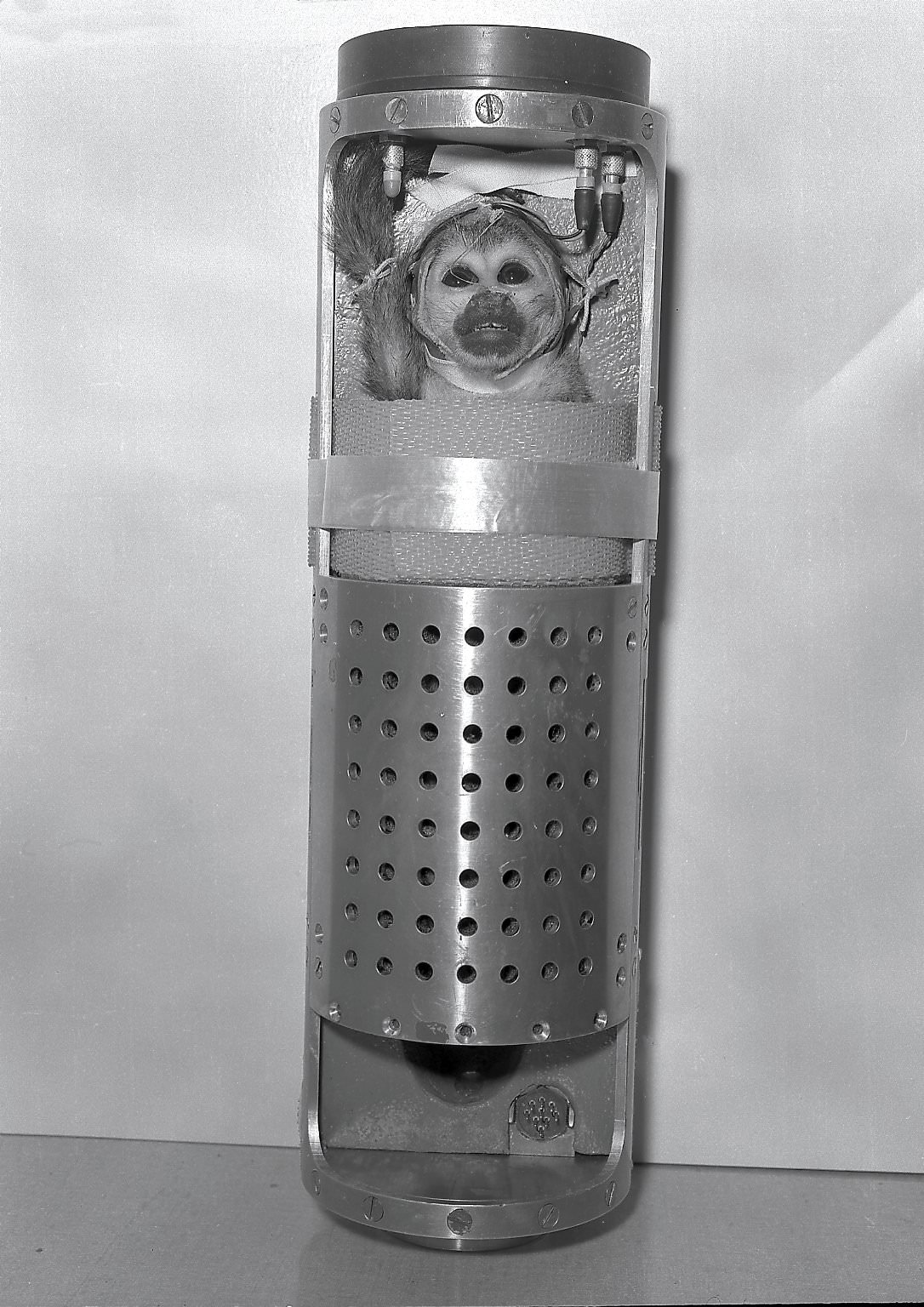[/caption]
The image to the left is not a primate astronaut from “Planet of the Apes.” It is, in fact, a real space monkey. Today marks the 50th anniversary of the first flight into space of a living being that survived the expedition. On May 28th, 1959, one rhesus monkey, named Able, and one squirrel monkey named Miss Baker became the first “astronauts” to survive a return flight into space.
Though they were not the first animals launched into space, Able and Baker helped pave the way for human spaceflight by showing that animals can indeed survive the rigorous launch and return of a spacecraft. Their vital signs were monitored during the mission, giving scientists a better understanding of what stresses spaceflight puts on a living body.
Launched aboard a Jupiter AM-18 rocket, Able and Baker flew to a height of 360 miles and traveled 1700 miles from their launch site at the Eastern Space Missile Center at Cape Canaveral, Florida. Their capsule landed in the ocean, and was retrieved by a U.S. Navy vessel commanded by Joseph Guion.
Guion told NASA, “As soon as I picked it up out of the water, it was flying all over the place. The ship was rolling and the nose cone swung back and forth. And I was just hoping that nobody would get hurt…We still didn’t know if the monkeys were alive ‘cause we didn’t have the telemetry. And so one technician ran up to the back end of it and plugged in and he says, ‘They’re alive!’ So everybody went ‘Yay!’ And that’s when I could finally say, ‘Ah!’ Relax.”
The entire flight lasted about 15 minutes, and during nine minutes of that the two tiny astronauts experienced weightlessness. After the recovery of their capsule, the monkeys were allowed to relax in an air-conditioned room aboard the vessel, then escorted to Washington, D.C. for a press conference.
To see a video of Able and Miss Baker getting ready for flight, check out this video on Youtube: Able and Baker blast off, from Universal News 1959.
Able died, unfortunately, a few short days after the flight. She needed an operation to remove an infected medical electrode, and had an adverse reaction to the anesthetic. Miss Baker, however, survived another 25 years, living at the U.S. Space and Rocket Center in Huntsville, Ala. During the rest of her life, she would receive over 100 letters a day from children who read about her adventures in textbooks and wanted to say ‘Hello’.
Miss Baker’s contribution was far from forgotten at the time of her death, and at her funeral in 1984 the attendance was well over 300 people. She still has a grave marker (pictured below) in front of the Alabama Rocket Center memorializing her part in the history of spaceflight.

Able and Baker were preceded by a long line of unsuccessful attempts by the U.S. to launch primates into space. The first attempt was Albert, who flew to 39 miles (63km) on June 11, 1948 aboard a V2 rocket, but died of suffocation during the flight. Albert II actually made it into space (above 62 miles/100km) on June 14th, 1949, but died upon the impact of his re-entry flight.
Primates were far from the first living things sent intentionally into space. That distinction belongs to a member of a different part of the animal kingdom: fruit flies. Fruit flies were sent into space, along with a sample of corn seeds, in 1947 to test the effects of radiation at high altitude.
So, to celebrate this historic event in spaceflight, it may be fitting to eat a banana for breakfast (or lunch, or dinner, or all three).


Amazing – especially when one thinks about the little time gap that passes by until men landed on the moon. Ten years are nothing in this sense…….